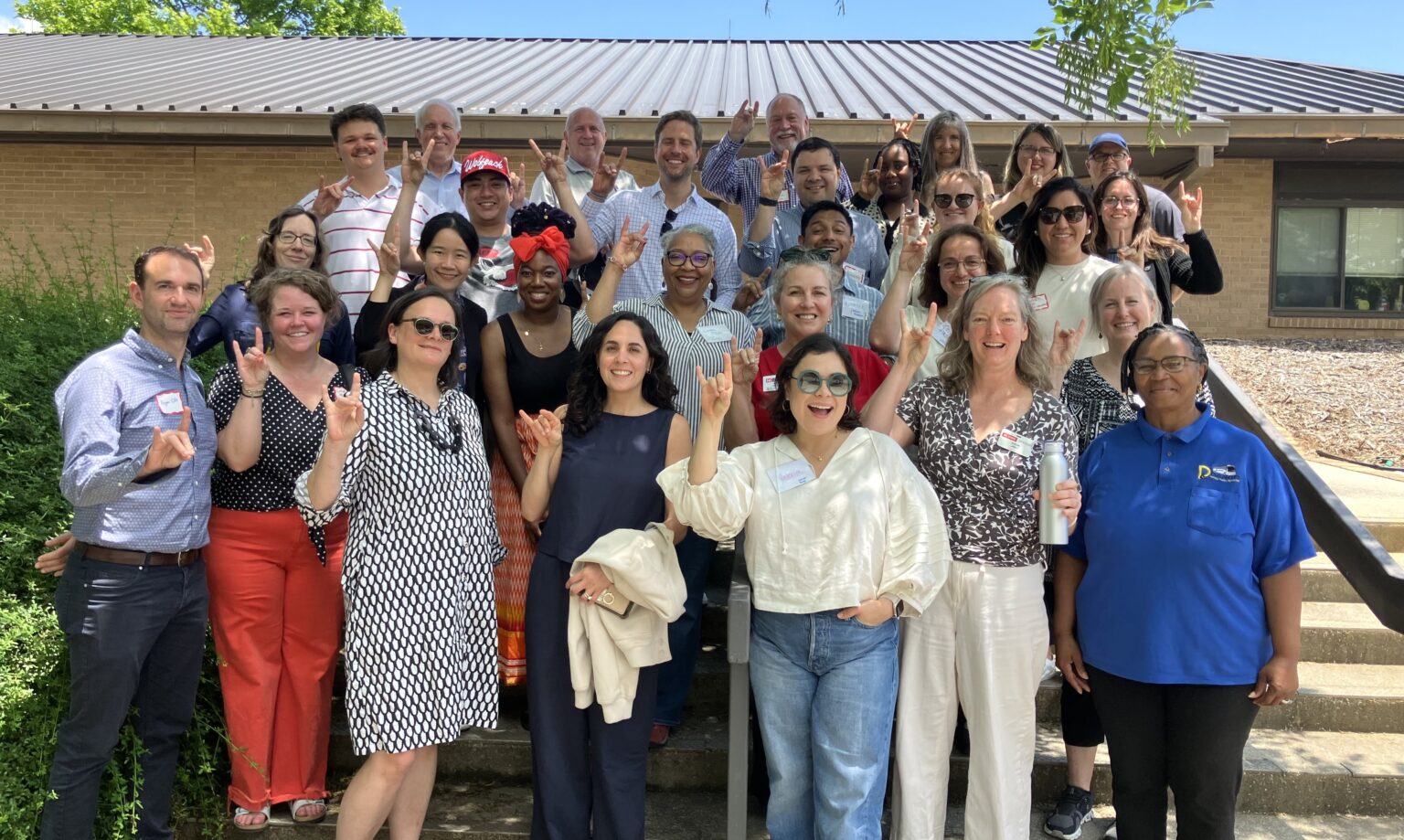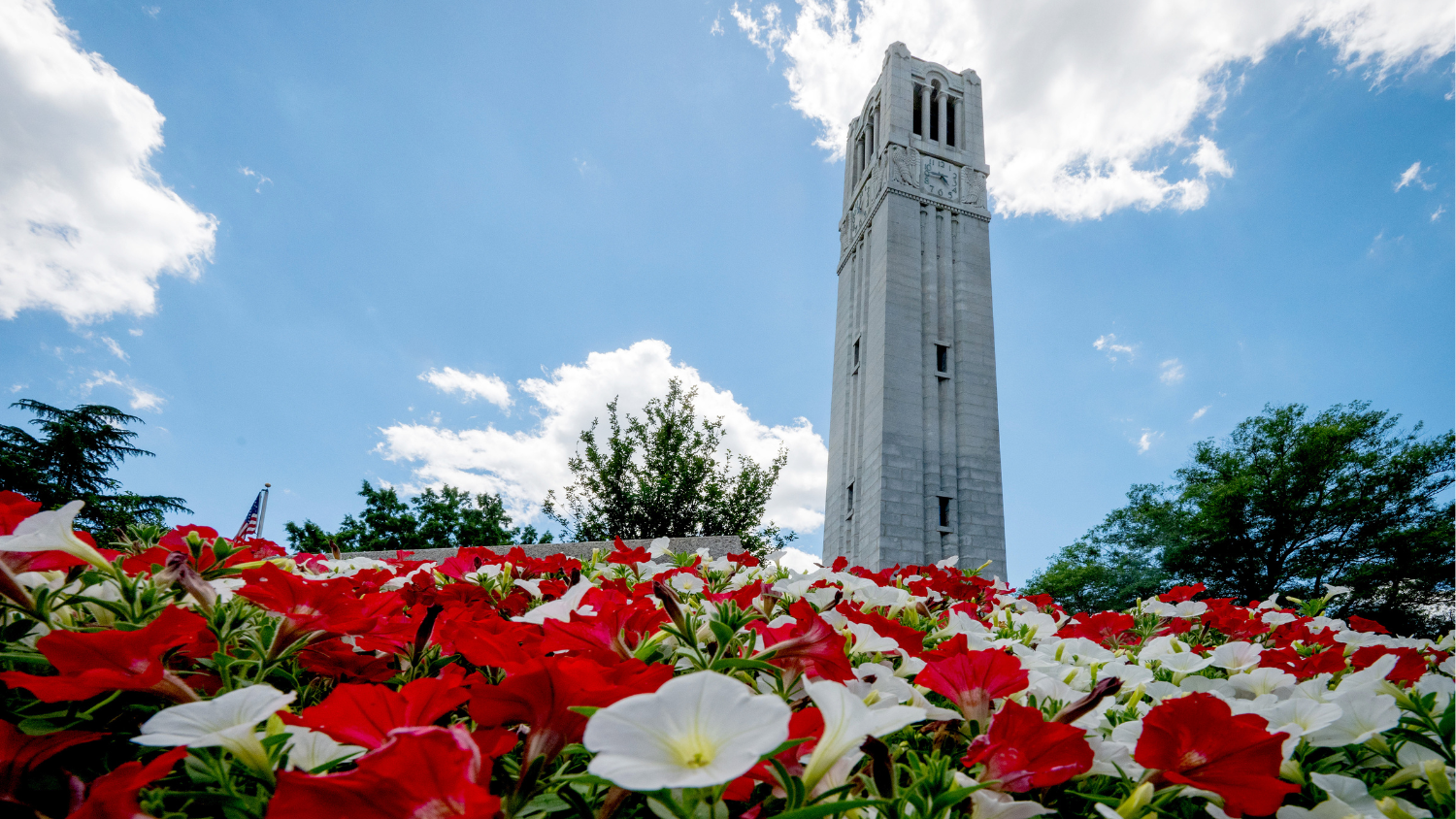Poole Profs Use Virtual Environment to Teach Real World Skills

Three professors of accounting in the NC State Poole College of Management have collaborated since 2009 to create and perfect a way for their students to gain meaningful experience with the processes involved in conducting a physical inventory audit.
In August 2016, they received an Innovation in Accounting Education Award from the American Accounting Association, recognizing their use of Second Life to provide a hands-on learning experience with a real world audit process: conducting a physical examination of inventory.
“It’s not possible to ask a warehouse to shut down for a day or two so that a team of students can gain on-site experience conducting an inventory,” said Scott Showalter, professor of practice in the college’s Department of Accounting.
Showalter; Frank Buckless, KPMG Professor of Accounting and head of Poole College’s Department of Accounting; and Kathy Krawczyk, Dixon Hughes Professor of Accounting and director of the college’s Jenkins Master of Accounting program, developed a workable real-world solution in a virtual environment.
A $400,000 grant awarded in 2009 by the Ernst and Young Foundation (EY) to Poole College’s Department of Accounting provided initial funding that enabled the faculty to create the alternative learning environment on the Second Life virtual reality platform. An additional $100,000 donated by NC State alumni working at EY made the combined $500,000 donation the largest single gift received by the college’s accounting department. The Ernst and Young Foundation, created in 1937, is dedicated to providing significant charitable support to institutions of higher education, specifically in the fields of accounting, tax and business.
“The financial support and active engagement from EY was critical to our being able to integrate a real world experience into this simulation,” Buckless said.
The funding enabled the professors to begin creating the online simulation. It took approximately 100 hours of faculty time to prepare case assignments, audit programs, client inventory instructions and other external materials for the virtual learning experience. An additional 150 hours of consulting time was required to build the warehouse, office, and brewery space within the Second Life application. RedPack Brewing company is a virtual brewery built by the professors in Second Life, complete with a stocked warehouse and office space.
Real world scenarios in a virtual environment
Over the years, the professors have met with and guided about 800 students via their avatars, providing instruction and monitoring their work as they conducted simulated inventory procedures at the RedPack. The simulation was designed to be easily modified to adapt to other schools’ curriculums, Showalter said. [View the college’s inventory warehouse in Second Life and watch a video that introduces students to the simulation.]
The students work in small groups to complete a physical inventory simulation in compliance with professional auditing standards. They begin their work in Second Life with an overview of the virtual environment, learning how to create and use their avatars, as well as the standard auditing documentation that they will use for their simulated inventory experiences. Over the course of two weeks, they test controls and other processes that are part of a complete physical examination of inventory and document their results.
The students are required to interview Mac, the warehouse supervisor; a role filled by Professor Showalter. Mac’s personality is based on Showalter’s personal experience with warehouse supervisors, providing a realistic experience for the students. While students meet with Showalter during ‘real world’ office hours, he remains in character, providing short, non-descriptive responses to the inexperienced student auditors.
“Mac” only answers questions that the student auditors explicitly ask, encouraging them to use professional skepticism and follow-up questions in interviews. He also does not allow any questions sent via email, so students must schedule followup appointments if they do not receive enough information in their first session. If the assignment is completed correctly, students should only need to visit Mac twice; however, some students return multiple times to get all of the information needed for their audit.
The American Accounting Association focuses on innovation, educational benefit, and adaptability when judging applicants and determining the winner of the Innovation in Accounting Education Award. This award is intended to encourage innovation and improve accounting education, two principles embraced by Poole College’s accounting professors.
The Second Life Physical Inventory Audit Simulation provides students an innovative way to experience real-world accounting procedures that will be more applicable to their future careers than any textbook or classroom lecture, Showalter said. Virtual reality allows students to make mistakes and learn from them, without suffering real-world consequences; and, working on the inventory project in small groups encourages collaborative learning. “Overall, the goal is to provide a complete learning experience by assigning tasks that the students would be responsible for as an auditor,” he said.
“We are appreciative of the recognition this award brings to the university and the college. The NC State Jenkins MAC Program has a great reputation; this type of award actually brings that gold star to an already top-rated program that strives to incorporate real world experiences and innovation,” Krawczyk said.
Positive student feedback
During 2010 and 2011, the college’s first two years working in the virtual environment, students were surveyed upon completion of the Second Life Physical Inventory Audit Simulation. The professors used feedback from the 2010 survey to alter the program for the 2011 students, leading to significant improvement in the student’s experience. In 2010, 65% of students agreed or strongly agreed that the simulation was an effective learning experience; by 2011, 75% of students shared that opinion. There was a 42% increase in the number of students that agreed or strongly agreed that the use of the Second Life platform for the inventory observation activity increased their interest in learning about completing an inventory observation.
Since 2012, students have been surveyed both before and after completing the simulation, testing the increase in their knowledge of the assignment’s learning objectives. In 2014, student knowledge of conducting physical inventory increased from 25.95% to 67.47%. Other areas, such as knowledge of conducting client interviews, preparing work papers, and applying professional skepticism also showed a large percent increase, proving that the Second Life experience is both effective and beneficial.
In addition to the surveys, students are invited to provide anonymous feedback about their virtual learning experience. One student commented, “It presented a number of subtle issues that do not typically emerge in academic studies but which are more practical. It encouraged me to think outside of the academic sphere and more on how those concepts can be applied in a practical scenario.”
“It’s nice to see the response from the students actually line up with the response from the academic community,” Showalter said.
Based on the positive student feedback, the professors are currently in the process of converting the simulation to a new virtual reality program that they expect will further improve the student experience by providing more opportunities to challenge the students and create a more life-like simulation. They will continue to conduct surveys upon completion of the inventory audit assignment to monitor student feedback on the new platform, expected to be in place for the 2017 academic year.
- Categories:


